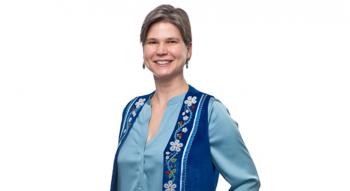Image Caption
Summary
Local Journalism Initiative Reporter
Windspeaker.com
The 2021 federal census has added two new questions to the suite of questions for Indigenous peoples in an attempt to provide more data and fill information gaps when it comes to Métis and Inuit people.
Métis will now be asked if they are registered members of a Métis organization or settlement; then asked to specify which one. Inuit will be asked if they are enrolled under, or are beneficiaries of, an Inuit land claims agreement and asked to specify which one.
First Nations respondents will continue to be asked whether they are Status Indians and to identify which First Nation or band they are with.
A 2021 Census Fact Sheet produced by Statistics Canada explains the additional questions are because “indigenous identity is commonly used to support evidence-based decision making across governments and organizations, as well as to understand the demographic and socioeconomic outcomes of First Nations people, Métis and Inuit in Canada.”
“You can have the nicest questions you want, but if no one is going to do your survey, then it’s not going to be that helpful,” said Métis physician Dr. Janet Smylie, who also serves as a Tier 1 Canada Research Chair in Advancing Generative Health Services for Indigenous Populations in Canada.
Smylie says StatsCan has made in-roads in on-reserve census gathering, but has failed when it comes to enumerating Indigenous populations in urban settings, where the majority of Indigenous peoples reside.
“I don’t know they really quite have accepted the fact that there’s such poor participation in the cities,” she said.
“There are other methods you can use, but I don’t know that Statistics Canada has expertise in those methods or have fully embraced them.”
Respondent-driven sampling is one such method, where a partner organization refers someone from a hard-to-reach or marginalized group. This method was employed in a study co-authored by Smylie, which appeared in BMJ Open, a medical journal, in late 2017.
The objective of the “Our Health Counts” study was “to provide evidence of the magnitude of census undercounts of ‘hard-to-reach’ subpopulations and to improve estimation of the size of the urban indigenous population in Toronto, Canada, using respondent-driven sampling (RDS).”
Three social and health agency locations in Toronto were used from March 2015 to March 2016 to interview 908 Indigenous participants. Efforts were made to reduce duplicates.
The data collected indicated that Toronto’s Indigenous community had been underestimated in the 2011 official census “by a factor of two to four.” According to “Our Health Counts”, the Indigenous population ranged from 45,000 to 73,000 while the official 2011 census estimated it to be at 19,270.
The official 2016 federal census tagged the Indigenous population in Toronto at 23,065.
Geoff Bowlby, 2021 Statistics Canada census manager, says he won’t comment on the results of the “Our Health Counts” study “without thorough review and input from a methodology expert,” but does point out that the federal census is a one-day event, while this study took place over a one-year period.
“To narrow it down to a particular day gives you the accuracy you need in a population count,” said Bowlby.
He also says sampling is not appropriate for a population count.
“The gold standard for population estimation is to conduct a census rather than to sample. The census is viewed as the count of the population. You want to run a census to know how many people live in any given area. You run a sample when you want to determine what the characteristics of that population are,” said Bowlby.
Smylie’s report contends that respondent-driven sampling “may be relevant for the enumeration of … homeless individuals….”
According to Toronto’s 2018 point-in-time homeless count, Indigenous people represented 16 per cent of the overall homeless population and accounted for 38 per cent of the outdoor homeless.
“We start off (the census) from a list of dwellings we know exist. That works perfectly well when you’re trying to enumerate the people who live in dwellings, but when you have a homeless population, it gets tricky,” said Bowlby.
Information is gathered through shelters, boarding houses, and similar institutions. Sofa-surfers are counted through a question in the survey.
Those living in encampments provide another challenge.
“We will go out and attempt enumeration in places that we know have large concentrations of people living rough,” said Bowlby, who anticipates those numbers will be even higher in 2021 as reports indicate encampments are growing in size.
He does note that people living rough in isolated locations may be missed, but he stresses that every effort is made to count all Canadians, including reaching out to organizations that “are very interested in ensuring the census has it right.”
The census does not make an adjustment for people it may miss counting, however.
“I’ll admit (that) … to enumerate the homeless population is a very difficult thing to do, but we do attempt it and we do our best at it. The response rate for the census is thought to be extraordinarily high in Canada. It’s one of the highest responses to a census anywhere in the world,” said Bowlby.
In 2016, 98.4 per cent of the population responded. That figure is based on the number of dwellings responding, which includes shelters, rooming houses and “an encampment would be considered a dwelling if a person has no other place to live,” said Bowlby.
Smylie says her work has shown that educated urban-living Indigenous people are the ones who fill out the census. However, her work also indicates that 80 per cent to 90 per cent of Indigenous urban dwellers live below the low income threshold.
The 2021 census takes place in May 11. However, Canadians will be invited to complete their form slightly before that date and for a brief period after Census Day.
Local Journalism Initiative Reporters are supported by a financial contribution made by the Government of Canada.

